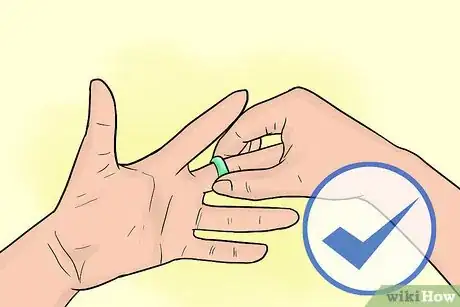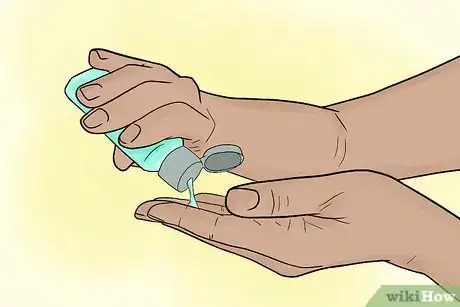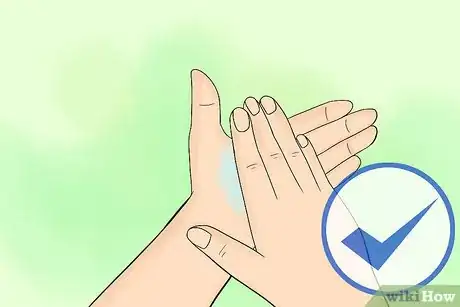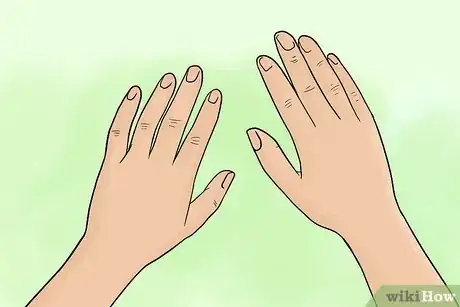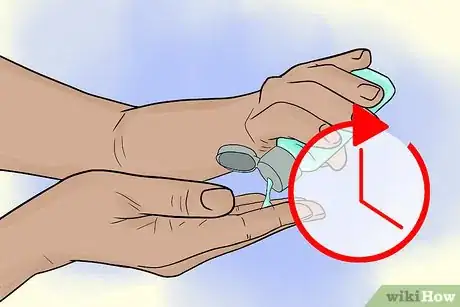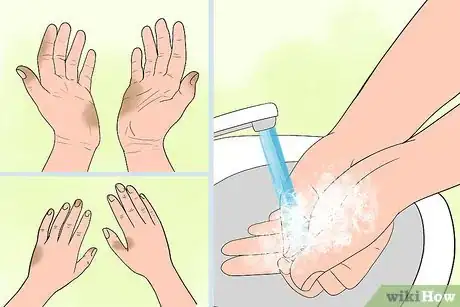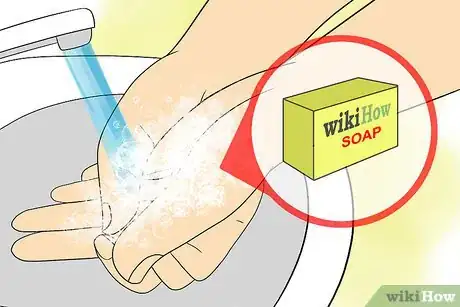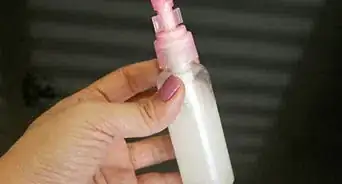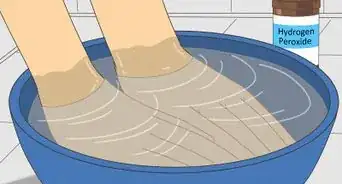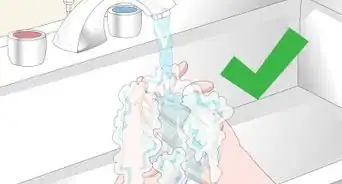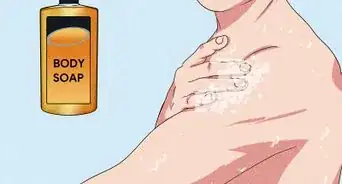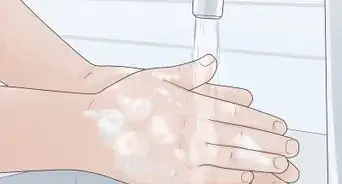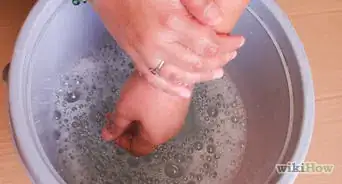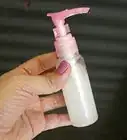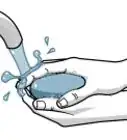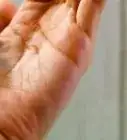This article was medically reviewed by Erik Kramer, DO, MPH. Dr. Erik Kramer is a Board-Certified Primary Care Physician at the University of Colorado. With over 15 years of experience, his clinical interests include obesity and weight management, diabetes care, and preventive care, as well as embracing a holistic approach to primary care. He received his Doctorate in Osteopathic Medicine (D.O.) from the Touro University Nevada College of Osteopathic Medicine and completed his residency at Central Maine Medical Center. Dr. Kramer is a Diplomate of the American Board of Obesity Medicine.
This article has been viewed 150,674 times.
Whether you are out playing a sport, gardening in your lawn, or just eating a snack, many daily activities require you to use your hands, which in turn can get dirty. Using hand sanitizer is a fast and effective way to clean your hands and get rid of lingering germs. It’s as easy as putting a small amount in your hands, rubbing them together for 30 seconds, and…that’s it!
Steps
Applying the Hand Sanitizer
-
1Clear your hands of all debris and jewelry. Take off all rings and other jewelry that may be covering the surfaces of your hands. If possible, rinse and remove all traces of visible organic matter, such as dirt, grease, and food, for the hand sanitizer to be most effective. [1]
-
2Squirt the hand sanitizer into the palm of one hand. Be generous with the amount of sanitizer applied. At minimum, you should use an amount that is about the size of a U.S. quarter.Advertisement
-
3Rub your hands together gently. Be sure to cover the surfaces of both of your hands, including fingers and around your fingertips and nails. You should also rub in the sanitizer about 2 inches (0.051 m) up each wrist.
-
4Let your hands dry off. After about 30 seconds of rubbing, your skin should have absorbed the sanitizer. If your hands are still a little wet, face your palms downward and let them dry in the air until they are no longer wet.
Tip: Hand sanitizer with a high alcohol content can dry out your skin and may cause irritation. Follow up with a moisturizing hand cream to help.
Knowing When to Use Hand Sanitizer
-
1Use hand sanitizer periodically throughout the day. Certain activities or settings can pose more of a risk for the spread of infections or illnesses if you have come into contact with animals, people, or food.[2] Consider what you have been touching and who you have been in contact with. Using sanitizer periodically during the day can help reduce the chance of getting sick.[3]
-
2Rinse your hands if they are visibly dirty. Inspect both sides of your hands and fingers to see if there is any debris on them. See if there is any buildup caught underneath your fingernails. Look for any open wounds, cuts, or scrapes. Hand sanitizer is most effective when applied to clean hands.
- Due to its alcohol content, hand sanitizer may irritate the wounds. This pain can be uncomfortable, but it is only temporary.
-
3Clean your hands with soap in most cases. The most effective way to remove or deactivate germs is to clean your hands with clean running water and soap. However, many times it is not possible to locate a bathroom or sink immediately. In this case, hand sanitizer is meant to be used as a convenient alternative to help reduce the spread of germs and potential chance of illness.[4]
- Hand sanitizers may not remove or deactivate harmful chemicals. If you have been exposed to any chemicals or pesticides, you should wash the exposed area with soap and water and consult with a doctor if necessary.[5]
- Washing your hands with soap is the most effective way to kill COVID-19, which causes the novel coronavirus, since you break down the germs.
EXPERT TIPJonathan Tavarez is the Founder of Pro Housekeepers, a premium cleaning service headquartered in Tampa, Florida catering to residential and commercial clients across the United States. Since 2015, Pro Housekeepers uses rigorous training methodologies to ensure high quality cleaning standards. Jonathan has over five years of professional cleaning experience and has over two years of experience as the Communications Director for the United Nations Association Tampa Bay. Jonathan earned a BS in Management and Marketing from the University of South Florida in 2012.Property Hygiene Enabler
 Jonathan Tavarez
Jonathan Tavarez
Property Hygiene EnablerOur Expert Agrees: Hand sanitizer doesn't kill all germs, and it may not remove harsh chemicals from your hands. Proper handwashing reduces the amount of all germs and chemicals, and it gives you the best chance at preventing illness.
References
- ↑ https://www.cdc.gov/handwashing/show-me-the-science-hand-sanitizer.html
- ↑ http://www.foodinsight.org/when-to-use-hand-sanitizers-wash-hands-hygiene
- ↑ http://www.berkeleywellness.com/self-care/over-counter-products/article/6-things-know-about-hand-sanitizers
- ↑ https://www.fda.gov/NewsEvents/Newsroom/PressAnnouncements/ucm509097.htm
- ↑ https://www.cdc.gov/handwashing/show-me-the-science-hand-sanitizer.html
- ↑ https://www.cdc.gov/handwashing/show-me-the-science-hand-sanitizer.html
- ↑ http://www.berkeleywellness.com/self-care/over-counter-products/article/6-things-know-about-hand-sanitizers
About This Article
Before using hand sanitizer, remove as much dirt, grease, or food from your hands, along with rings or other jewelry so the sanitizer can effectively clean your hands. Then, squirt a quarter-sized dollop of sanitizer onto your hands and gently rub them together for 30 seconds. Additionally, rub the sanitizer around your fingernails and about 2 inches up each wrist. Finally, allow your hands to air dry until your skin has fully absorbed the sanitizer. For advice on how to decide between using hand sanitizer or washing with soap, read on!
